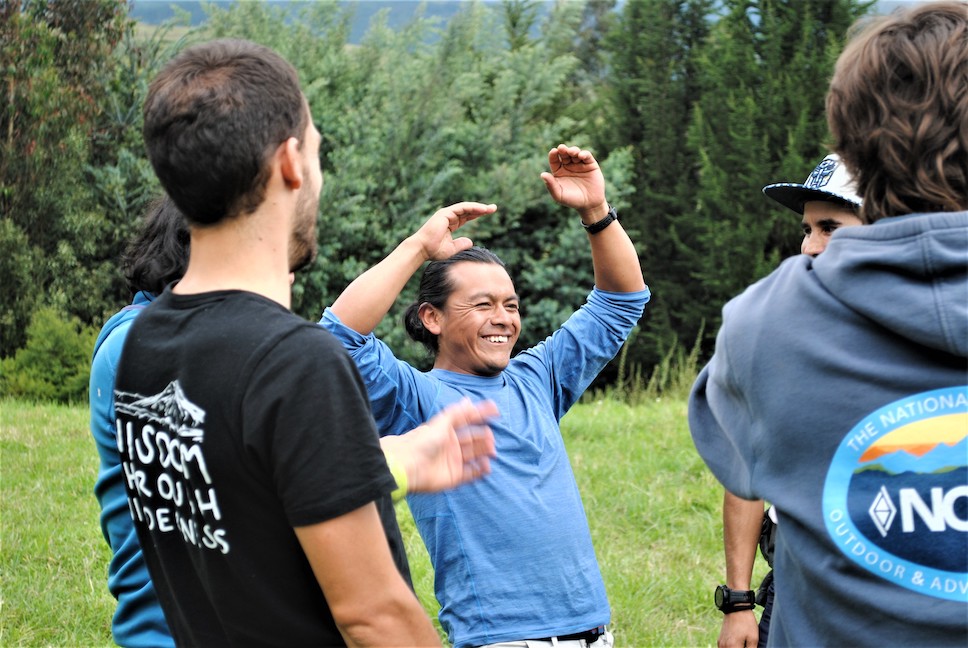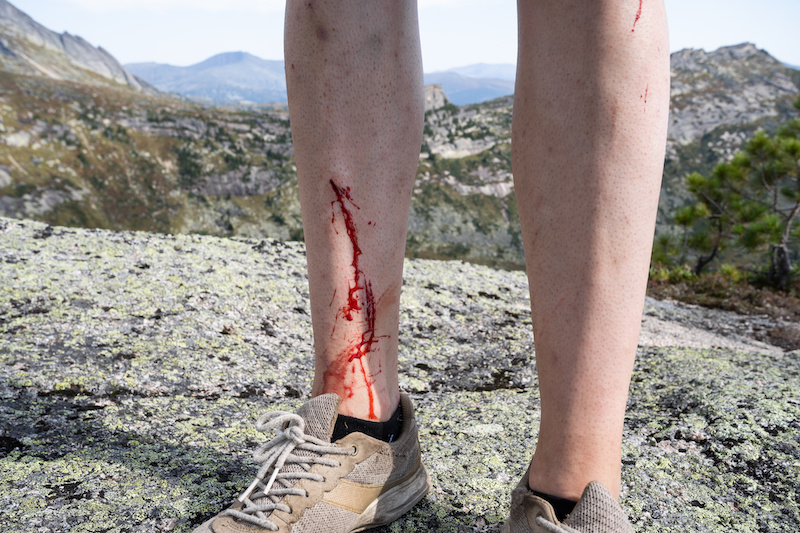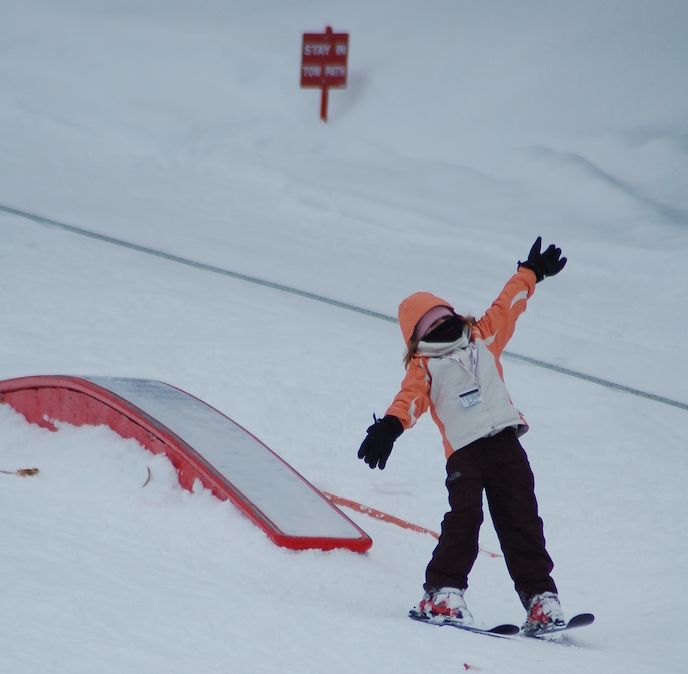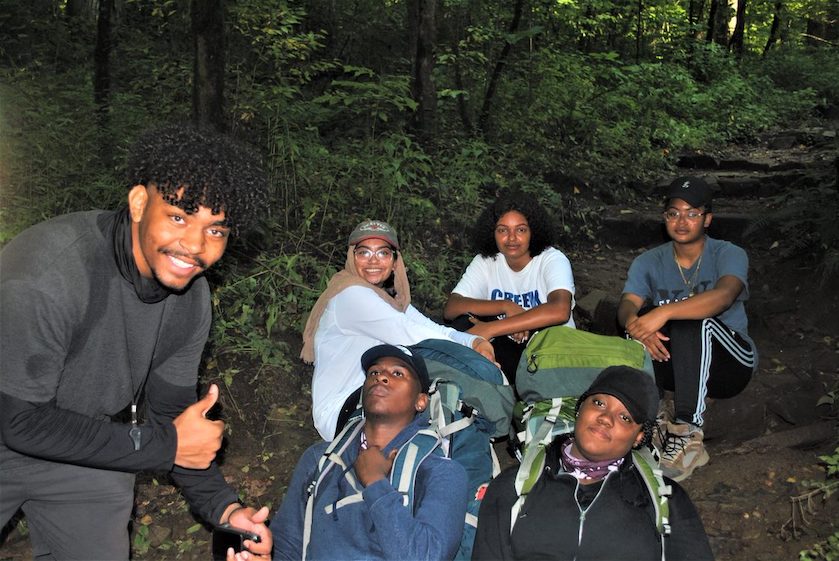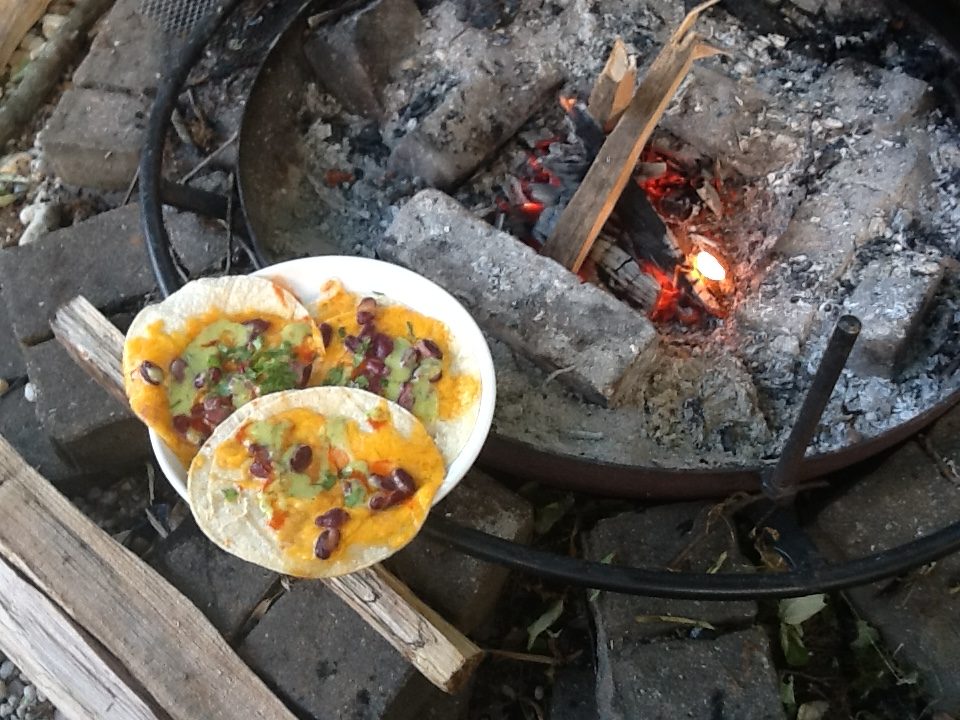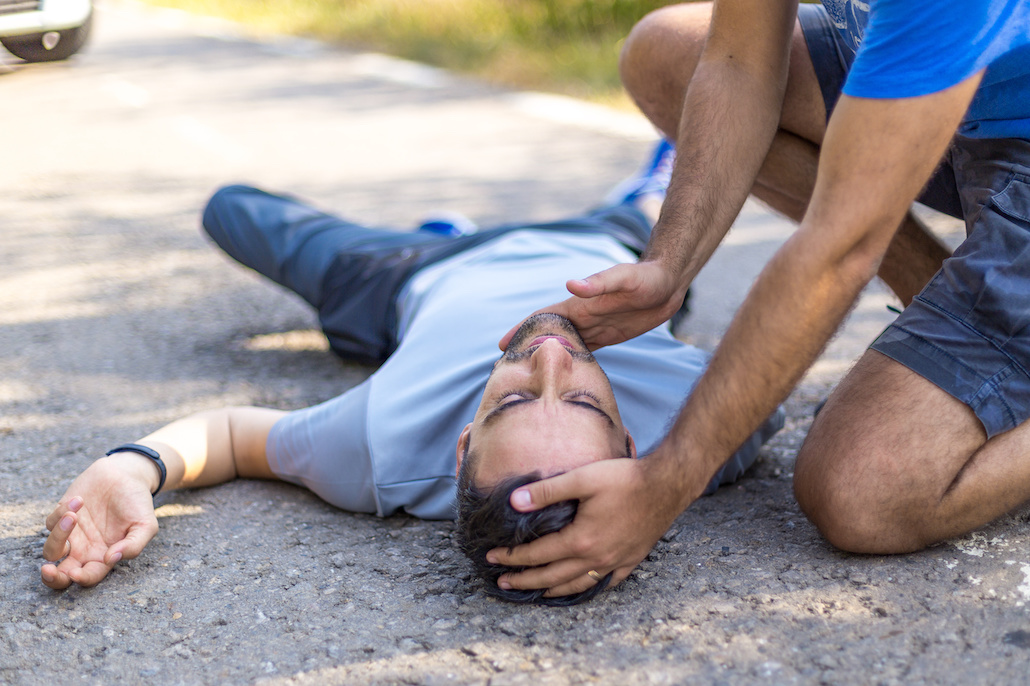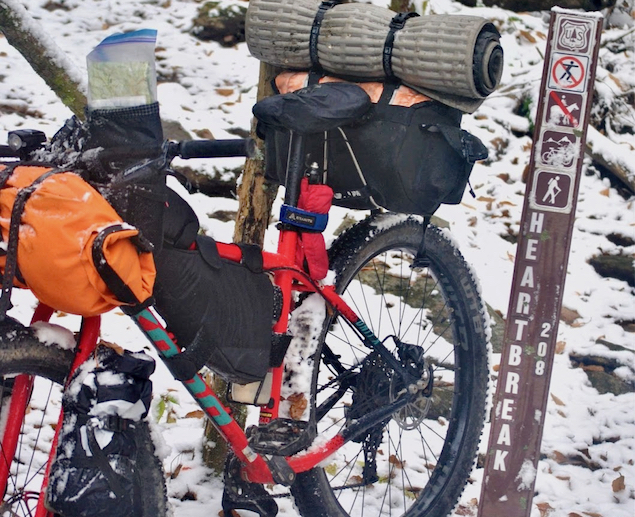NCOAE Blog
Adult Education Courses & Adventure Vacations
Adult CoursesTaking a well-deserved adult vacation offers joyful predictability. There’s time off to do what you want, visit places that you’ve maybe never seen before, and return home with some great photos of friends and family. Then, for most of us, it’s back to a predictable grind. By mid-week, we’re back to being the same employee or boss that we were when we packed up and headed out for vacation.
What The National Center for Outdoor & Adventure Education (NCOAE) offers outdoor enthusiasts — including adults who are curious about backcountry travel — is an alternative to your typical adult vacation. We prepare, set up, and guide life changing adventure-based adult education courses for anyone looking to learn new skills — or those sharpening existing skills in the outdoors, enabling them to return to daily life with new insights into leadership and how to protect our natural resources.
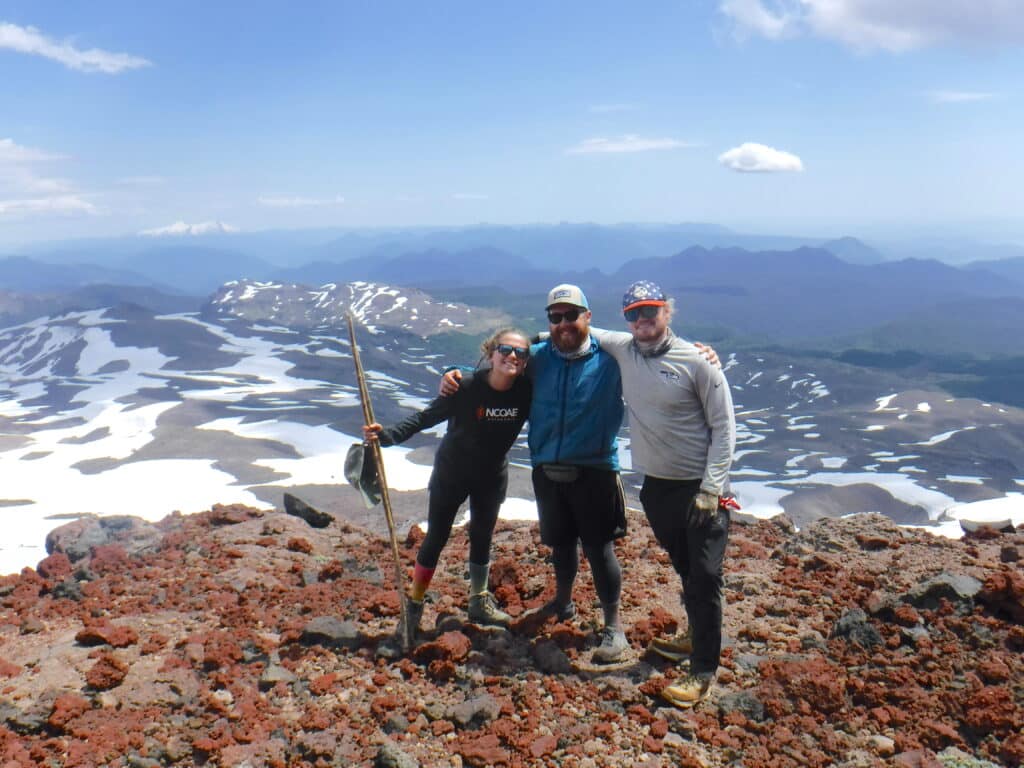
We can even help you pitch your trip as a benefit to your employer. Who knows? Adventure-based education may be the future for your organization’s workplace employee engagement. (more…)
Concussion Recognition and Treatment in the Backcountry
Wilderness Medicine TrainingConcussion recognition and treatment has gotten a lot of attention over the last decade, mostly in the context of youth and professional sports such as tackle football and soccer. It’s even a topic for those who serve in our armed forces. However, confusion over its prevention, diagnosis, and treatment remains widespread.
In an interview with a reporter from the Chicago Sun Times, former National Football League quarterback Brett Favre, who was knocked out cold only once in his 20-year career, claimed that “probably 90 percent” of the tackles he endured left him with a concussion.
He’s most likely correct in that estimation. After all, the definition of “concussion” is broad: “A concussion is a brain injury, a disturbance in brain function induced by traumatic forces, either from a direct blow to the head or a transmitted force from a blow to the body.” It disrupts brain function at the cellular metabolic level but does not result in major structural damage. Conventional MRI or CT scanning will not show evidence of a concussion.
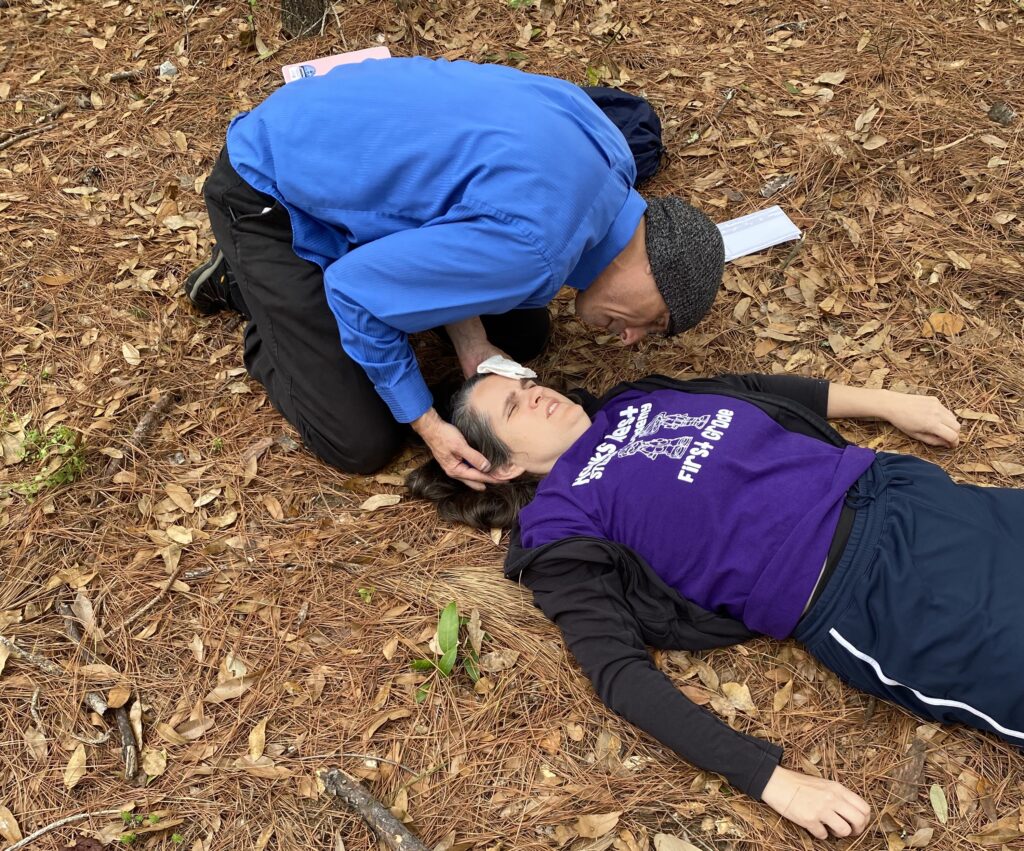
So, how do you know if you or someone else has suffered a concussion while in the backcountry? And, after having made that determination, what should be done? Having clear answers to these two questions is essential for successful recovery and to prevent long-term cognitive and psychological complications. This is true no matter where the concussion takes place, but especially in the backcountry where medical treatment from a full-time team is unavailable. (more…)
Avoiding Target Fixations and Incident Pits in the Backcountry
Risk Management“Look where you want to go!”
I have conveyed this message to wilderness course participants countless times, shouting, screaming, and using hand signals when necessary. Sometimes I’m yelling above the roar of a set of rapids or the sound of an adjacent waterfall.
“Look where you want to go!”
I emphatically issue the same advice while watching climbers rappelling down a cliff, or verbally guiding a student on a mountain bike through a sketchy section of trail. In each case, the point of my shouting is to get the students to stop looking at the obstacle.
“Look where you want to go” really translates as “Stop looking at the obstacle! Don’t fixate on the hazard!”
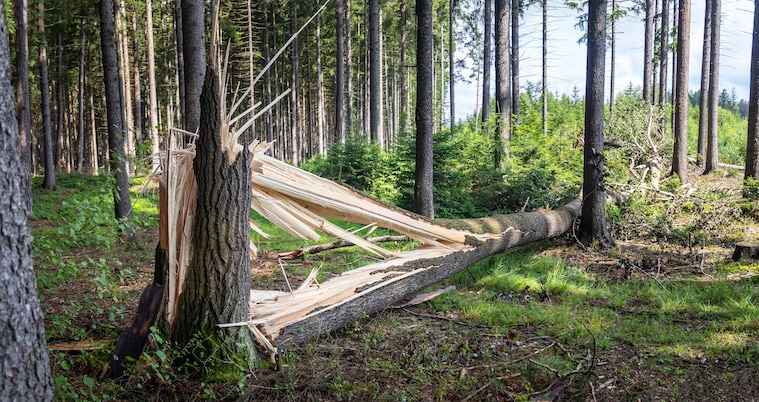
And it doesn’t matter if you’re a Wilderness First Responder approaching the scene of a backcountry incident, or a student on a wilderness course attempting to navigate a perceived hazard or obstacle, looking too closely at a hazard you want to avoid can be very dangerous.
At first glance — no pun intended — you might think it wise to actually look closely at the hazard you want to avoid. No argument there. You absolutely need to identify obstacles, especially in the backcountry and other places considered Wilderness. In fact, identifying an obstacle is a key factor in remaining safe.
But here’s the thing: (more…)
Most EMS Terminology Comes Down to Initials, Abbreviations and Acronyms
EMT TrainingA few years ago, we ran a three-part series on slogans, slang, and terminology as it applies to a trio of human-powered outdoor recreational activities. If you recall, we started out with some “gnarly” surfing terms, then we “tied in” to a conversation about climbing, finally pulling a “wet exit” on the language of paddling.
You can review these three articles using the links below:
- From Sept. 20, 2020: Surfing Terminology and Slang: You Can’t Play BINGO Without the Lingo
- From Oct. 10, 2020: On Belay — Climbing Terminology and Slang
- From Oct. 30, 2020: Paddling Terminology and Slang: Nobody Says ‘Up a River Without an Oar’
There was quite a bit of word whimsy in those articles, and we made sure to remind readers that successfully lassoing the linguistics of a particular activity was no guarantee you were mastering that particular sport professionally.
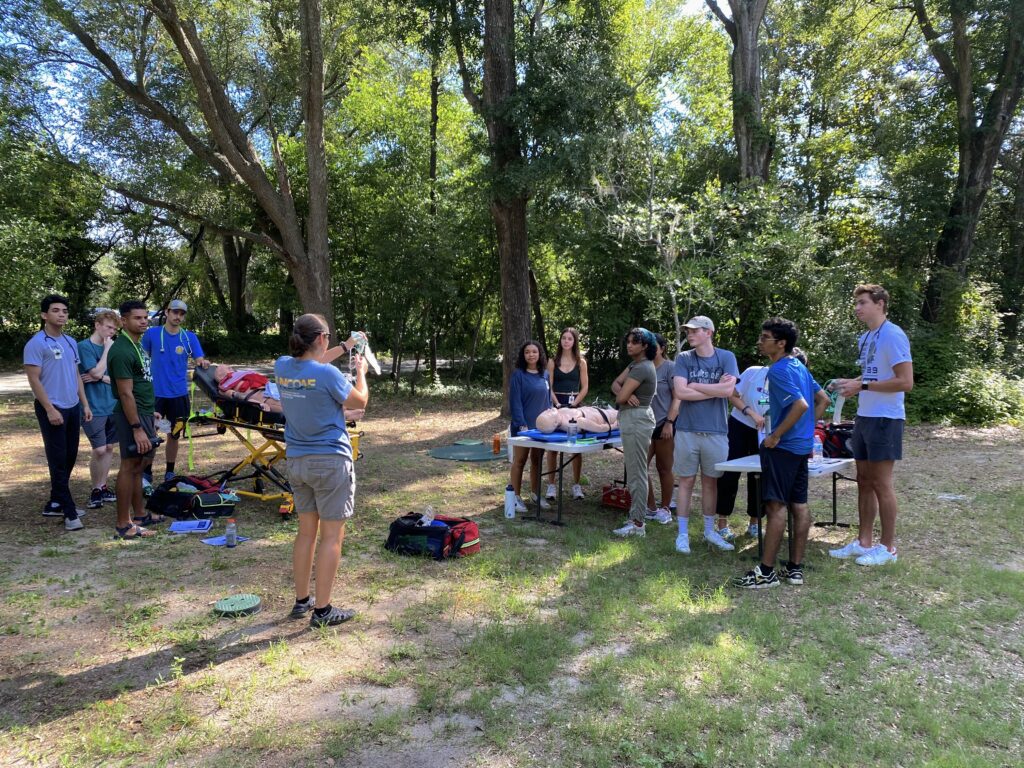
Today we’re taking a more serious look at language, this time highlighting the terminology used by members of the Emergency Medical Service (EMS) community. That’s because one of our areas of focus here at The National Center for Outdoor & Adventure Education (NCOAE) is emergency medicine training and education. And whether you’re an EMS, medical professional, or wilderness first responder (WFR), these terms are most often employed when these professionals find themselves managing a medical emergency.
First off, you might notice that most of these terms come in the form of acronyms, abbreviations, and initials, and the reason for that is to enable first responders to quickly communicate and react with each other and the patient in the field.
The source for these acronyms comes from the NCOAE Wilderness Medicine Field Guide (ISBN 978-0-578-87449-4).
Here, we present them in alphabetical order: (more…)
When it Comes to Wilderness, Is it an Adventure or Experience?
Outdoor EducationYears ago, I was working in wilderness-based setting with a group of gang members who were attempting to break away from the often-violent lifestyle in which they found themselves. During a break our programming, I asked a loaded question.
“Anybody want to tell me about their tattoos and what they mean?”
The 30 or so gang members, hailing from a variety of organizations — MS-13, Bloods, Crips and Latin Kings — stared up at me. Hard. One participant in the back shouted, “Nobody gives a shit about our tattoos!”
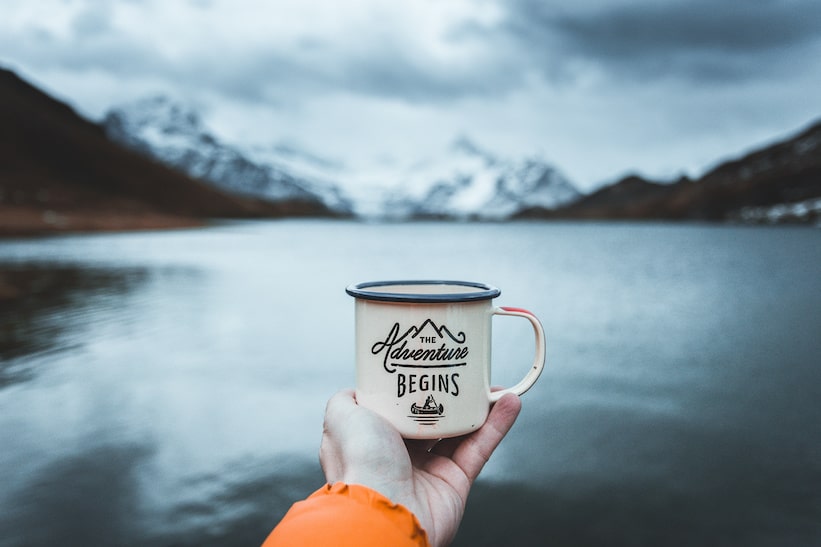
When I burst out laughing, I was met with even harder stares, I realized an explanation was in order. I told the participants that everyone wants to know about their tattoos. They’re just too afraid to broach the subject.
I said that if we were to put a person covered in tattoos from head to toe on a scale, and then somehow remove all that ink on their skin and weighed them again, the weight change would probably be undeterminable.
If, however, that same tattooed gang member walked into a job interview, the weight of those tattoos — what they represented — would be a thousand pounds. So again, I asked them to tell me the stories and histories behind their tattoos. What followed was an enlightening experience. The curtain was pulled back and these folks opened up and shared the significance behind their body art.
My point is this: Words and images have weight.
Words and Images Have Weight
I tell you this because a leading outdoor industry retailer — REI (Recreational Equipment, Inc.) — recently announced an adjustment to their marketing, based on patterns they say are cropping up in our culture today. REI’s announcement that the company is rebranding its tour business from REI Adventures to REI Experiences caught many people I know off guard, myself included.
It’s an effort, they say, to increase their participant base to three million clients a year. The company’s officers and administrators fear the word “Adventure” is getting in the way of its effort to grow the business.
So, what is it we think when a brand that builds a $3.7-billion-a-year business around catering to adventurers decides to change the word to experiences instead? Is adventure too heavy of a word? Is the term adventure dangerous? Are we — both consumers and outdoor community members — becoming soft?
What comes next? Will the (more…)
The Role of the Wilderness First Responder During Water Rescues
Wilderness Medicine TrainingIt may surprise you to learn that drownings — along with heart attacks and falls — are among the leading causes of death for those who venture into the wilderness for recreation or education in the United States.
Statistics show that there are nearly 4,000 fatal drownings each year in the United States, with a little more than 8,000 nonfatal drownings. These figures include boating-related drownings. In fact, the threat of drowning is so prevalent that the first edition of the NCOAE Wilderness Medicine Field Guide devotes an entire section to Environmental Submersion and Drowning Injury.
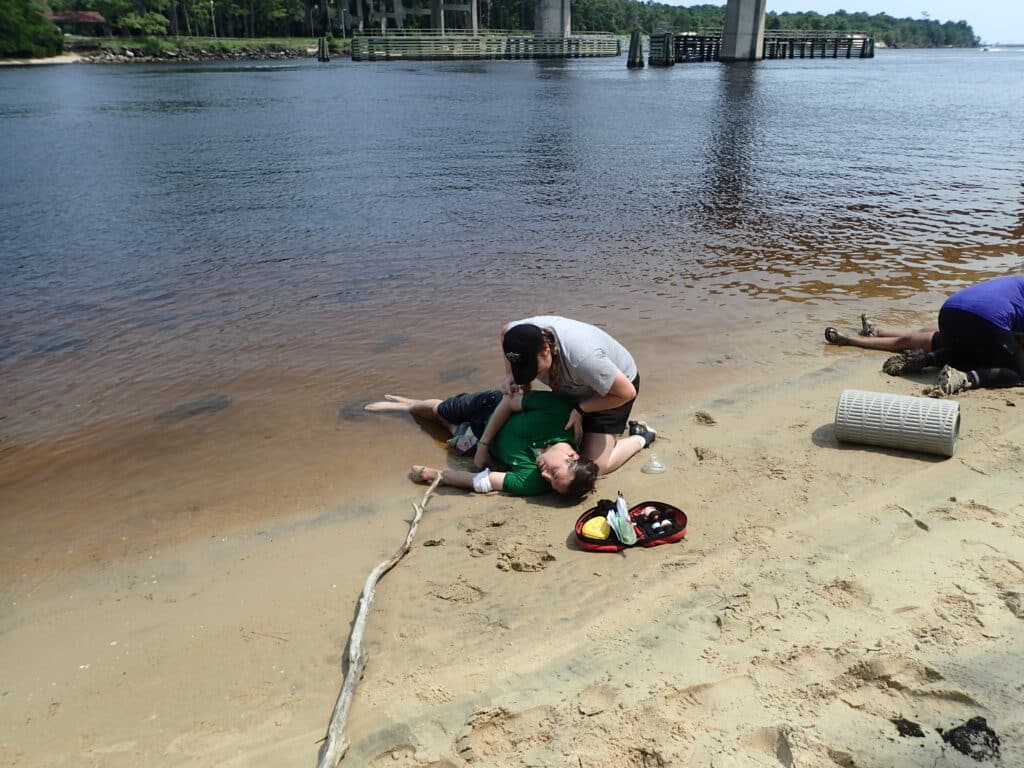
Of course, it’s during the spring and summer that most outdoor explorers are on the water, including those participating in backcountry expeditions. Lakes, rivers and streams provide much-needed relief in the backcountry on a hot August afternoon and are sought-after destinations for many outdoor enthusiasts.
For those training to become Wilderness First Responders (WFR) and those participating in Wilderness First Aid (WFA) training, a major consideration is assisting with medical emergencies that occur on or near the water. (more…)
Outdoor Industry Jobs Require Personal Experience and Certifications
Outdoor Educator TrainingProfessional development — learning that allows you to earn or maintain professional credentials — is key to career planning, especially when it comes to considering a career in the outdoor adventure and education industry. Much more than participating in a bunch of classes, our sector of the outdoor industry looks favorably on applicants with wilderness medicine training and certification, skills training and certification, and hands-on guiding and expedition leadership experience.
Truth is, we here at NCOAE found that operating an adventure education company during a health pandemic was challenging. And staffing our AEE-accredited organization with highly experienced instructors became increasingly difficult but not impossible.
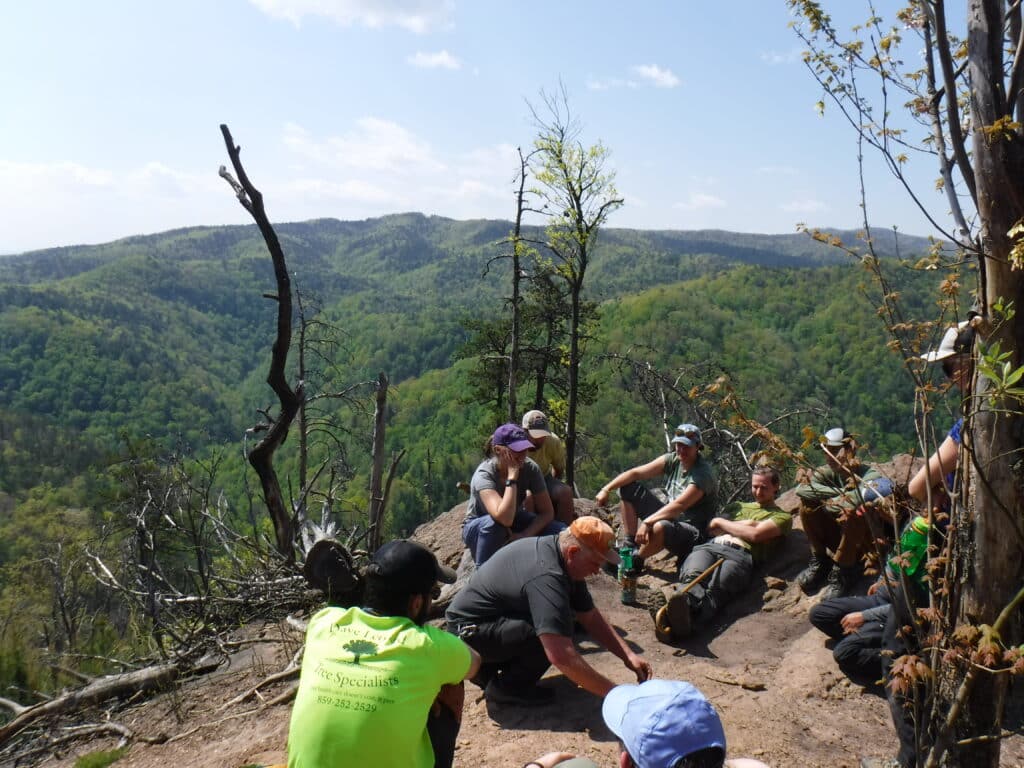
Like other industries, we suffered a staffing shortage, and yes, some of our existing staff left to pursue other pathways. But what we’ve noticed lately is a lack of experience from some people who thought working in the outdoors would — quite literally — be a walk in the park.
Many of these would-be outdoor educators and guides decided that sitting on a couch while looking at photos and films of wilderness expeditions was a suitable alternative for actually going out and experiencing the outdoors.
This potential pool of applicants backed out and went the way of the “Instagram Adventurer” or the “Armchair Explorer.” And in talking with our colleagues across our sector of the outdoor industry, we’re not alone in seeing this trend. Nearly all outdoor adventure and education organizations are taking pause and evaluating the future of trainings, staff recruitment, and what it means to be qualified to head out into “wild places.”
Regardless of what other organizations choose to do about their staffing challenges, NCOAE will not budge on what is required of our field instructor and outdoor educator candidates. Hands-on experience coupled with recognized industry certifications still matter and always will.
If you’re interested in a seasonal or full-time job in outdoor education, here are my recommendations on how to proceed. (more…)
Applying the Principles of ‘Leave No Trace’ to Daily Life in an Urban Setting
UncategorizedWhat is Leave No Trace?
The idea behind Leave No Trace is to embrace specific wilderness stewardship values in order to protect our backcountry areas for generations to come. Back in the early 1940s, Robert Baden-Powell, founder of the world Scouting movement, said, “Try and leave the world a little better than you found it.” Over time, this morphed into, “Always leave your campground cleaner than you found it.”
Fifty years later, in the early 1990s, that Leave No Trace concept was immortalized through an educational curriculum developed by the United States Forest Services in partnership with NOLS (the National Outdoor Leadership School). The outcome was an agreed framework for instilling awareness on the part of wilderness travelers to interact with nature in a manner that reduces human impact.
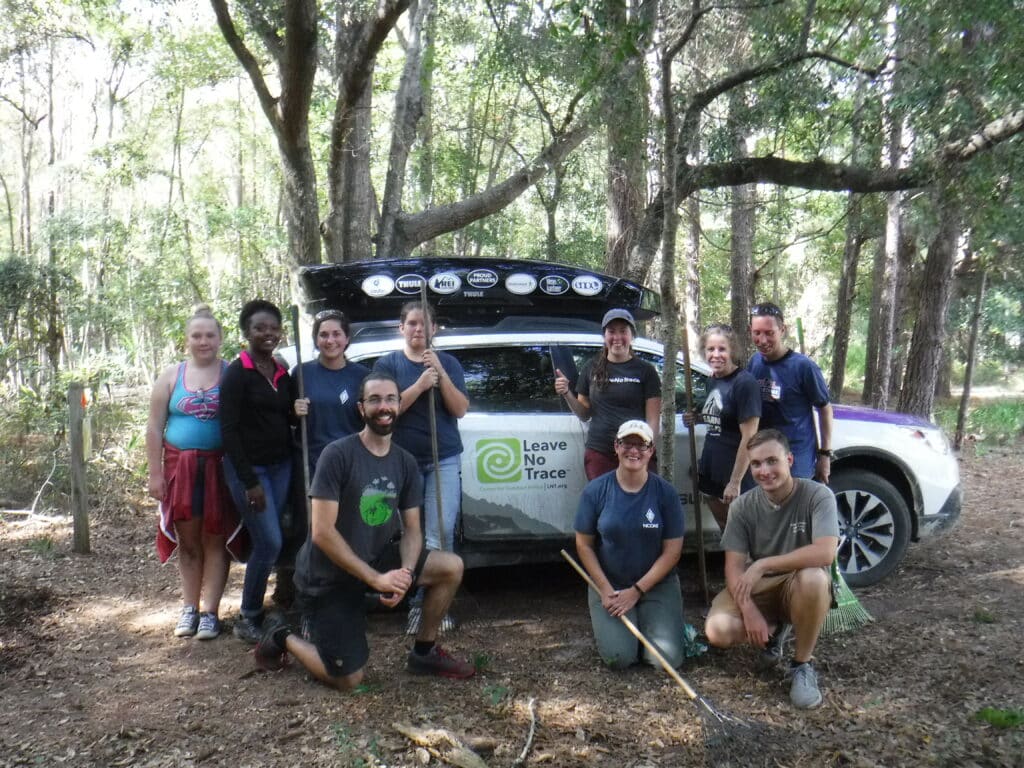
What is The Importance of Leave No Trace?
The idea behind Leave No Trace is to embrace specific wilderness stewardship values in order to protect our backcountry areas for generations to come. Today, that program — run by the Leave No Trace Center for Outdoor Ethics in Boulder, Colorado — impacts more than 15 million people in the United States and dozens of other countries with conservation initiatives, education, training, and research.
Baden-Powell’s simple sentiment more-or-less condenses the seven principles behind today’s Leave No Trace (LNT) program. The well-known LNT’s principles are: (more…)
There’s a Reason Why Outdoor Ed is Not Club Med
Outdoor EducationZac Adair, our co-founder and executive director, recently asked one of our course
participants why they signed up for a particular outdoor adventure. “It was a photo that
appeared on your website of a guy on top of a mountaintop with the blue skies above the
glaciers in the background.”
Picture yourself here. It’s a common tactic in all great marketing campaigns. If after
seeing an advertisement, you can picture yourself wearing a specific shirt, driving a
particular truck, or vacationing on a cruise ship that’s making its way to the Bahamas,
then the team of marketers responsible for those ads has done their job.
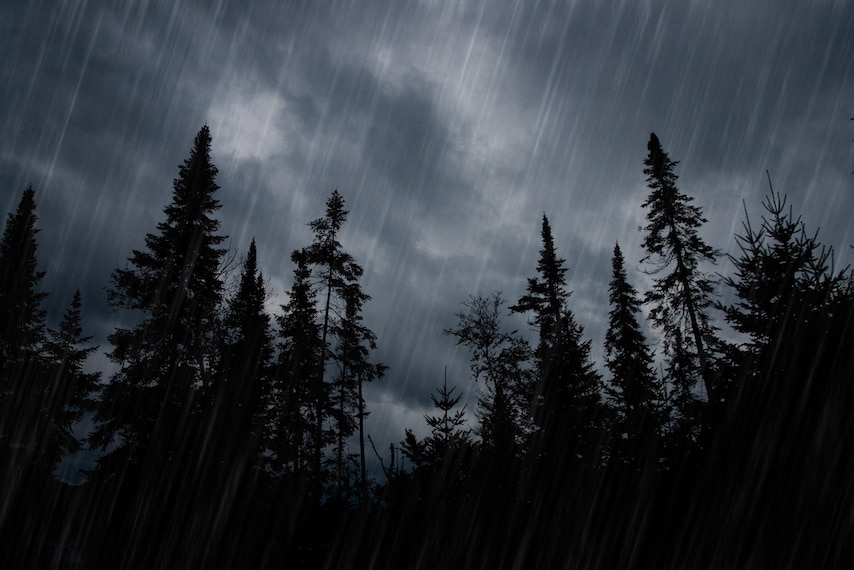
Here at The National Center for Outdoor & Adventure Education — where we’re focused
on designing and guiding outdoor and adventure education experiences that promote
personal growth, professional development, and stewardship in our community and the
natural environment — we employ the same tactics. Take one look at our website and
you’ll see photographs and videos featuring real NCOAE students participating in the
very courses and trainings that we offer around the globe.
So, it’s little wonder that these videos and photos prompt our website visitors to picture
themselves on one of our backcountry adventures. But here’s the thing that may escape
such a casual or initial thought. That picture of a (more…)
Cape Fear Academy Students Immerse Themselves in Ecuador’s Culture
International ExpeditionsLate last year, the staff at Cape Fear Academy in Wilmington, North Carolina, asked for our help in creating a unique and meaningful 10-day, outdoor and adventure-based out-of-country expedition for a handful of its high school students.
In particular, Cape Fear’s educational leaders were looking for a diverse destination that would enable their students to immerse themselves deeply in a new culture — an adventure that would extend far beyond selfies, social media, suntan oil, and sand — and which would reinforce the school’s own values and curriculum. Known for designing and leading custom outdoor education programs for private and independent schools, we were happy to help!
The original Cape Fear Academy was established in 1868 as an independent school for boys. After closing in 1916, the school was reestablished 52 years later in 1968 with the commitment of “forging capable young adults with skills, confidence and resilience to take risks, solve problems and overcome challenges.”
So, it was with that focus in mind that the school asked us here at The National Center for Outdoor and Adventure Education (NCOAE) to custom design an expedition for nine of the school’s students, along with a chaperone from the school and three NCOAE field instructors. Their destination? Ecuador.
Our staff prepared an itinerary that incorporated the school’s objectives of instilling confidence, facing challenges, taking on informed risks, and solving problems. After all, those missives mirror the (more…)
NCOAE’s EMT Training Opens the Doors to Jobs Across the U.S.
EMT TrainingApplicants to our nationally renowned EMT training courses often ask us if they can take
their new EMT credentials to the state where they live, and the answer is mostly yes.
The National Center for Outdoor and Adventure Education’s (NCOAE) campus is
located in North Carolina, where we offer 21-day “Intensive” EMT-Basic and 23-day
“Intensive” Advanced EMT training courses among others. Successful completion of
these courses authorize our graduates to take the National Registry of Emergency
Medical Technicians (NREMT) exam.
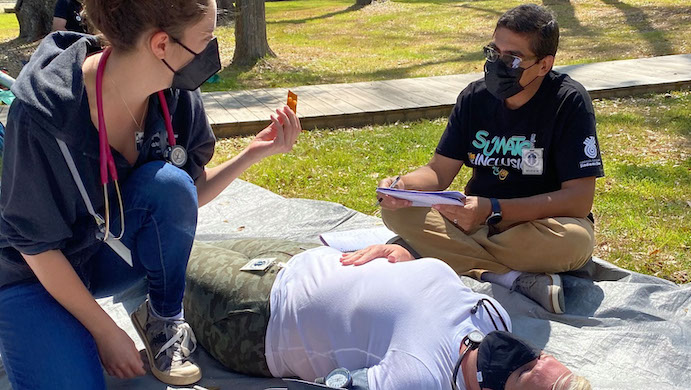
National Registry Certification examinations evaluate the competence of EMS
practitioners at a variety of levels, including Emergency Medical Responder (EMR),
Emergency Medical Technician (EMT), Advanced Emergency Medical Technician
(AEMT), and Paramedic.
NREMT credentials are either required for an initial license or accepted for legal
recognition or reciprocity in all 50 states and Puerto Rico. That makes it easier to
maintain
NCOAE Recommends — 2022 Outdoor Industry Conferences and Summits
ConferencesThe health pandemic has had an enormous impact on the outdoor education and adventure programming industries, not to mention those who thrive on human-powered outdoor recreation.
Our industry-sponsored conferences and tradeshows especially suffered as a result of strict, but often necessary local and state mandates about social distancing and public gatherings. And now that those precautions have mostly been lifted — with industry confabs back to in-person events for the first time since the COVID-19 pandemic started in February of 2020 — it’s time to get back into the full swing of in-person conferences and trade shows.
If you’re an outdoor industry professional, or you would like to work in outdoor education or adventure-based programming, you might want to check out the conferences and industry events highlighted in this post.
Attending in-person professional gatherings allows you to learn about what’s changed and what’s trending for our profession, participate in activities and discussions relating to the profession, and network with your peers.
Here then is a list of upcoming conferences, summits and gatherings that are worth checking out for 2022:
4th Annual Outdoor Economy Conference — April 4-7, 2022, in Cherokee, N.C.
The Outdoor Economy Conference seeks to connect company CEOs, conservation leaders, federal agency personnel, local and state park personnel, and economic developers to focus on what conference organizers believe matters both now and in the future.
This year, there are four separate conference tracks to explore, including: (more…)
Program Spotlight: We’ve Got Teen Expeditions Far and Wide
Teen CoursesLooking for a teen expedition this summer? We here at NCOAE are excited to announce that our 2022 season of backcountry and wilderness adventures for teen-agers is already up and running and in full swing.
At the end of February, a dozen students led by a team of NCOAE field instructors, headed down to Ecuador for a cultural immersion and rafting adventure. For those of us on the administrative side of things, couldn’t wait for the students experience the Palugo Farm — a sustainable organic farm that feeds 30 families each week.
To be sure, we have a busy season ahead, with backcountry adventurers to be found anywhere, from paddling in the Everglades to rafting Oregon’s beautiful Three Sister’s wilderness, as well as backpacking all around Pisgah’s National Forest.
Any of this sound good to you? Are you looking to step out of your comfort zone this summer? We still have openings on many of our summer teen leadership expeditions. It’s an opportunity to learn what it takes to navigate the backcountry, push your limits with new activities, and make life-long friends as you work together to cultivate the adventure you never knew you needed.
With activities that include backcountry cooking, campsite set-up, compass and map navigation, Leave No Trace training, as well as exposure to the NCOAE curriculum, you’ll leave the backcountry feeling accomplished and ready for more.
Spend seven days rafting down the (more…)
Old School Tips for Handling Bleeds on the Trail Get a Needed Update
Wilderness Medicine TrainingInjuries that involve bleeding are not completely uncommon to those of us who visit or work in the backcountry. In fact, injuries that produce blood are considered inherent risks in wilderness travel, whether that be during a multi-week expedition or an afternoon hike in your local woods.
Knowing how to handle medical emergencies — and that includes knowing how to stop the bleeding when it occurs — is an essential backcountry skill. But here’s the thing… when it comes to bleeding, some “vintage” emergency tactics may have outlived their usefulness. For example, if you’re old enough to remember first aid courses where you were taught to use pressure points or to elevate the injured site, you should know this:
Those methods have been found to be ineffective and are no longer recommended.
So today, we’re going to talk about this commonly encountered medical problem, and how the vast majority of bleeding issues can be effectively and rapidly controlled by almost anyone with a few simple techniques. Fist though, let’s cover the three types of external bleeding.
Types of external bleeding
External bleeding is visible, whereas internal bleeding is not. Internal bleeding can result from a variety of problems ranging from traumatic injuries to illnesses. Stopping internal bleeding requires advanced techniques and often surgery. In other words, if you suspect internal bleeding, call for help.
External bleeding is divided into three types: (more…)
The Benefit of Early Exposure to the Outdoors
InspirationI grew up in the Midwest, and while some may claim the flatlands don’t have much to offer — I often found one way or another to get into trouble. I climbed trees in my front lawn, jumping off one branch, and climbing higher. While learning how to ride a bike, I often showed up to kindergarten the next day with bandages covering my knees.
On family ski trips, I was the one tumbling head over skis down the mountain rather than staying atop my skis like other people. I wanted to know how fast I could go, but nine times out of 10, I lost control and fell victim to power of the mountain. My mother was not a fan of my experiments as we watched her fearless seven-year-old tumble on down below.
There’s no question I have always had an adventurous heart, a thirst for more, and a passion for the world around me. I was fortunate to be able to spend more days outside than inside during my childhood.
That passion grew as I grew. While all my friends were putting on their prom dresses, I was stepping into a harness. One of my most cherished memories was checking my gear for about the 10th time, giving my spotter down below the “all clear” signal, and slowly making my way down. I was in Costa Rica, about to rappel down a waterfall at sunset, thinking “there’s nowhere else I’d rather be.”
While most of my senior class friends wrapped up their final year in high school with ceremonial “lasts,” I was surfing seven-foot waves, sea kayaking in bioluminescence waters, hiking through a cloud forest, and whitewater rafting Costa Rica’s Savegre River.
I could probably write a book about the personal lessons I learned during all of my travels, but the one that changed everything was the realization that (more…)
NCOAE Celebrates Black History Month with NCCU’s Cheatham-White Program
Custom ProgramsIt’s pouring rain, and some of North Carolina Central University’s custom outdoor education program participants slip into the knee-deep mud, briefly maintaining their balance, only to slide like baseball players down a short, navigable incline.
Stephen Mullaney, NCOAE’s director of school partnerships, quickly glances over to see how Christina is doing — just in time to see a huge grin from beneath her rain hood. That figures, he thinks.
Christina Garrett is a go-getter, no question about that. She is the Associate Director of University Scholars at North Carolina Central University (NCCU), one of about a hundred Historically Black Colleges and Universities (HBCUs) in the United States.
As Christina, NCCU students, and some of NCOAE wilderness field instructors continue their trek in the rain, she tells Stephen about her own outdoor experiences, including fishing with her father, visiting state parks, and her accomplishment of heading what is likely the first required wilderness orientation experience for incoming freshmen and transfer students at a Historically Black College/University.
Christina’s program, which is named the Cheatham-White Scholarship Program, was established in 2018 and provides academic scholarships based on merit. Focusing on students attending NCCU, the program was designed for exceptional student scholars who possess a range of interests, proficiency in both the arts and sciences, and who demonstrate leadership potential and a commitment to service.
Admittance to the scholarship-supported program includes tuition and fees, housing, meals, textbooks, a laptop, travel, and personal expenses. The generous scholarship also means four summers of enrichment and networking. That means travel — maybe even international travel.
Where NCOAE comes into the picture is at the (more…)
Adventures in Outdoor Cooking: Do it for Your Taste Buds
Wilderness CookingThe instructor-in-training for the day reaches into her pack, shakes her head and swears softly.
“We left a bottle of fuel at basecamp. Who do we call for resupply?”
Liz, NCOAE’s course director walks over to the instructor and looks into the canvas bag. Then she shrugs her shoulders and says, “There’s no one to call. Looks like we’ve only got fuel for three out of eight nights.”
Scanning the forest, Liz points to a pile of rocks on the ground where previous groups have built fires and says, “Collect wood, build a fire, cook dinner.”
A few days earlier, this same group was packing for an Instructor Training Course. Participants are educators who have been in the outdoor education and adventure industry for a few years and have a firm grasp on technical skills. We use the course to familiarize these future instructors with our curriculum, educational practices and other components that are unique to NCOAE.
So, when an Instructor Course group forgets to pack an important piece of gear — in this case fuel — we like to see how problem solving, creativity and ingenuity unfold to keep an expedition moving forward.
Now, with a fire started and a meal selected for the evening, it’s time to start cooking. These NCOAE instructors in training begin by building a potholder out of rocks, stirring up the coals, and blending ingredients together for the meal.
There’s little confusion, no drama, and the meal comes together because these educators have been practicing outdoor skills at home in their backyards as well as in outdoor settings like the one mentioned here.
Practice makes perfect
The way these participants upped their backcountry skills and calmly slapped together a great evening meal was to practice their “seeking game.”
It was back in the late 1990s when a neurologist named Jaak Panksepp coined the term “seeking system” in regard to (more…)
Six Tips on How Best to Respond to a Medical Emergency
Medical TrainingIt’s pretty well known that we here at The National Center for Outdoor & Adventure Education (NCOAE) are experts when it comes to training our students how to respond to medical emergencies in remote or wilderness settings. Less known is the fact that we also educate anyone interested in training that satisfies the eligibility requirements for the National Registry of Emergency Medical Technicians.
As a result, we teach our students to recognize that medical emergencies can happen anywhere and at any time. And it’s how we respond to those emergencies that makes all the difference in the world.
Below are tips in six categories — including safety, recognition, requesting help, patient communication, and being prepared — when handling a medical emergency.
Safety. Don’t be afraid to help, but don’t become part of the emergency. Use extreme caution near roadways or in hazardous environments. Take a few extra seconds to stop traffic or put on your life jacket.
Recognize that an emergency is happening. Whether you’re dealing with a friend or a stranger, if something seems wrong, ask if they are OK. When is something an “emergency?”
- Breathing: When someone is having trouble breathing, always consider it an emergency.
- Circulation: Many conditions, including heart attacks, can cause the heart to have difficulty pumping blood and can be rapidly fatal. Don’t wait, assume.
- Significant traumatic injuries: Falling from high places or being hit by a car are obvious examples of events that can cause significant injury. However, even if the person involved seems OK at first, assume there are unseen internal injuries.
- Neurologic problems: Any time the brain does not seem to be functioning correctly — even if it’s only mild confusion. Or if someone can’t use/feel one or more of their extremities. These are all emergency situations.
Call for help. This may be as simple as (more…)
Eastern Divide Trail Promises Bikepacking Heaven for Enthusiasts
BikepackingConsider what it is you like best about the Appalachian Trail or the Pacific Crest Trail, and then ask yourself this question, keeping in mind that, hypothetically, you were born decades earlier than you really were:
Benton MacKaye, the father of the Appalachian Trail — or perhaps Clinton Churchill Clarke, who conceived the notion of the Pacific Crest Trail — have asked you to scout the proposed routes to help with the writing of a guidebook.
Would you do it?
“Yes please,” would be my immediate response.
Granted, it’s a little late to do original onsite research for those two hike-thru heavens, but let’s move ahead to the 21st century and Logan Watts. A decade ago, from his home in the mountains of North Carolina, Logan launched a website called Pedaling Nowhere, which has since become BikePacking.com — a site has garnered an enormous following.
(If you’re unfamiliar with the term or activity, according to the editors of BackPacking.com. bikepacking is the “synthesis of all-terrain cycling and self-supported backpacking. It evokes the freedom of multi-day backcountry hiking and travel off the beaten path, but with the range and thrill of riding a nimble bicycle. It’s about venturing further into places less traveled, both near and far, via singletrack trails, gravel, and forgotten dirt roads, carrying the essential gear, and not much more.”)
Getting to Know Bikepacking.com
BackPacking.com started out as a place to share bikepacking stories, product review and profiles of people, their bikes and the routes they were riding, and by 2014, as more and more routes were catalogued, readers looked forward to everything from challenging and life-changing expeditions to day trips that, by the way, can also be life changing.
Bikepacking’s following grew to a point where a print journal — The Bikepacking Journal — was launched (which is now published in April and October of each year), and bikepacking “collective” was formed, which has grown to have enormous influence on the bike industry.
Many of the routes you can find on the website were originally published by (more…)
Eastern Divide Trail Promises Bikepacking Heaven for Enthusiasts
BikepackingConsider what it is you like best about the Appalachian Trail or the Pacific Crest Trail, and then ask yourself this question, keeping in mind that, hypothetically, you were born decades earlier than you really were:
Benton MacKaye, the father of the Appalachian Trail — or perhaps Clinton Churchill Clarke, who conceived the notion of the Pacific Crest Trail — have asked you to scout the proposed routes to help with the writing of a guidebook.
Would you do it?
“Yes please,” would be my immediate response.
Granted, it’s a little late to do original onsite research for those two hike-thru heavens, but let’s move ahead to the 21st century and Logan Watts. A decade ago, from his home in the mountains of North Carolina, Logan launched a website called Pedaling Nowhere, which has since become BikePacking.com — a site has garnered an enormous following.
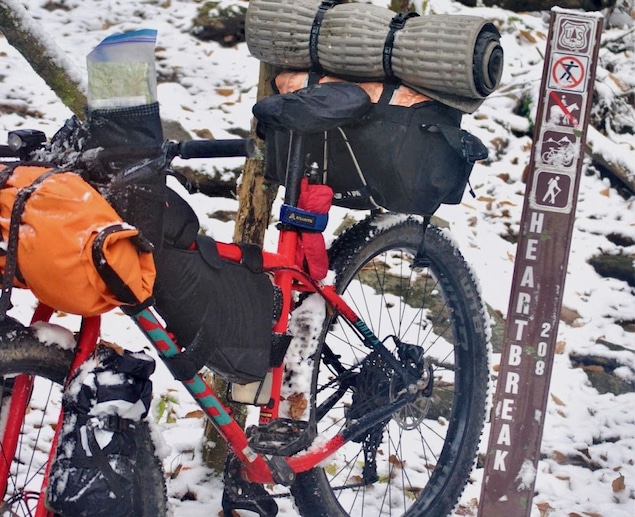
(If you’re unfamiliar with the term or activity, according to the editors of BackPacking.com. bikepacking is the “synthesis of all-terrain cycling and self-supported backpacking. It evokes the freedom of multi-day backcountry hiking and travel off the beaten path, but with the range and thrill of riding a nimble bicycle. It’s about venturing further into places less traveled, both near and far, via singletrack trails, gravel, and forgotten dirt roads, carrying the essential gear, and not much more.”)
Getting to Know Bikepacking.com
BackPacking.com started out as a place to share bikepacking stories, product review and profiles of people, their bikes and the routes they were riding, and by 2014, as more and more routes were catalogued, readers looked forward to everything from challenging and life-changing expeditions to day trips that, by the way, can also be life changing.
Bikepacking’s following grew to a point where a print journal — The Bikepacking Journal — was launched (which is now published in April and October of each year), and bikepacking “collective” was formed, which has grown to have enormous influence on the bike industry.
Many of the routes you can find on the website were originally published by
(more…)TALK TO US
Have any further questions about our courses, what you’ll learn, or what else to expect? Contact us, we’re here to help!

